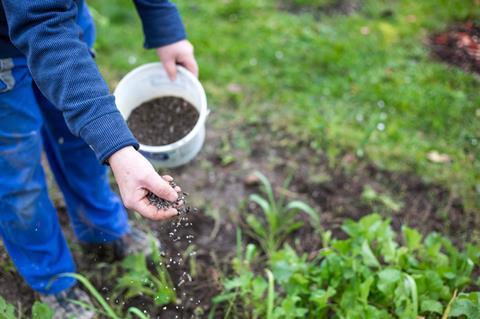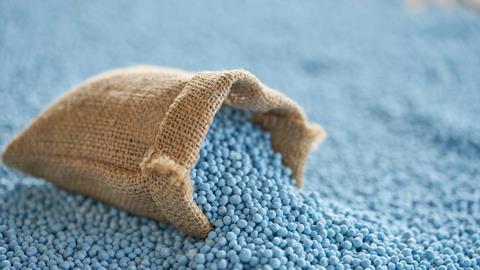Ben Valsler
This week, Brian Clegg on an industrial compound with a patchy reputation.
Brian Clegg
The fertiliser business has had a mixed press, primarily due to problems with nitrogen-based products. However, it would be short sighted to not acknowledge the huge role that fertilisers have played in increasing and improving food production – and one of the key contributors is the simple inorganic compound potassium sulfate.
Potassium is one of the key nutrients for plants, where it contributes to building proteins, starch and sugars, activates enzymes, stimulates photosynthesis and controls the flow of water through the plant. Although potassium sulfate is not the most common source of potassium in fertilisers, with other compounds such as potassium chloride more common, some fruit and vegetable plants are adversely affected by chlorides; potassium sulfate helps to meet their needs. An additional bonus is the sulfur content, which is also required for protein synthesis and enzyme reactions.

Unlike many of the simple compounds used as fertiliser, potassium sulfate isn’t widely available in mineral form. It does exist as arcanite, but not in sufficient quantities. Instead, traditionally, potassium chloride, which is widely available as a mineral, was reacted with sulfuric acid to produce potassium sulfate and hydrogen chloride (giving a by-product of hydrochloric acid). Recently, however, it has proved possible to extract the potassium sulfate from other minerals such as kainite and schönite, which are primarily magnesium salts but have some potassium sulfate present. One source is the Great Salt Lake in Utah.
Growing better crops wasn’t the first use for this white crystalline substance. It has been known since the middle ages. By the seventeenth century, when it was available as a by-product of nitric acid production, it became part of leading edge medical treatment, used both to help with urinary problems and to engage perspiration, which was considered beneficial to ‘sweat out’ some conditions.
The compound’s early names reflected a combination of acid and alkaline source material, with terms such as arcanum duplicatum or sal duplicatum. It was also known as Glaser’s salt after the seventeenth century Swiss chemist Christopher Glaser, vitriolic tartar and, once the elements were better understood, potash of sulfur. Unfortunately, the benefits for humans have proved rather less than those for plants, and potassium sulfate is no longer considered medically effective. It appears to be harmless, apart from causing mild irritation to eyes and skin in large quantities, and is designated safe for use in food by the FDA, assuming it isn’t consumed in such quantities as to cause excess potassium. But it simply doesn’t do any good. It can, however, make a useful appearance in cosmetics, particularly for skin care, not because it helps the skin in any way, but because it increases the viscosity of the product. Here’s the science bit, as the cosmetic adverts say: it makes face cream more gloopy.

On top of its other uses, potassium sulfate is one of a number of potassium salts used to reduce muzzle flash from firearms, particularly artillery weapons. When a gun fires, there is a bright flash as the projectile leaves the muzzle of the weapon and left over propellant mixes with air and flares up. This flash is undesirable as it highlights the location of the weapon and, if shooting in the dark, can make it difficult for those close by to see immediately after firing. Putting a small amount of potassium sulfate in the gunpowder reduces muzzle flash as it limits the reactivity of hydrogen from the propellant gasses and the oxygen in the air.

The structure of potassium sulfate crystals is unusually complex for a simple inorganic compound, looking like a tangle rather than a simple repeating form. The compound is also structurally interesting when partially dissolved. If potassium sulfate is heated in water then swirled around, the undissolved crystals form a distinct spiral structure with multiple arms, not unlike a spiral galaxy. This structure is stable as long as the water remains heated.
We might no longer want to treat ourselves with potassium sulfate – and its use in firearms hardly makes it user friendly. However, this simple compound redeems itself by helping us grow better fruit and veg… and perhaps to look a little more beautiful.
Ben Valsler
That was the green-fingered and beautiful Brian Clegg with potassium sulfate. Next week, I’ll return with a compound that’s been in the news recently and is increasingly going to be found in your local pharmacy – cannabidiol, or CBD, a medically promising compound extracted from cannabis or hemp plants. Until then, you can find us on iTunes, or at chemistryworld.com/podcasts, and get in touch by email – chemistryworld@rsc.org – or on twitter, where we’re @ChemistryWorld. I’m Ben Valsler, thanks for joining me.













No comments yet